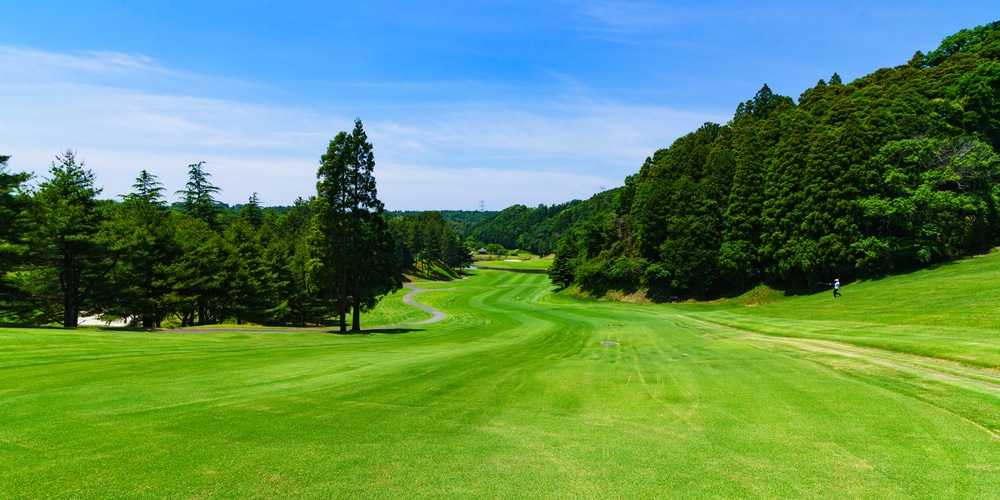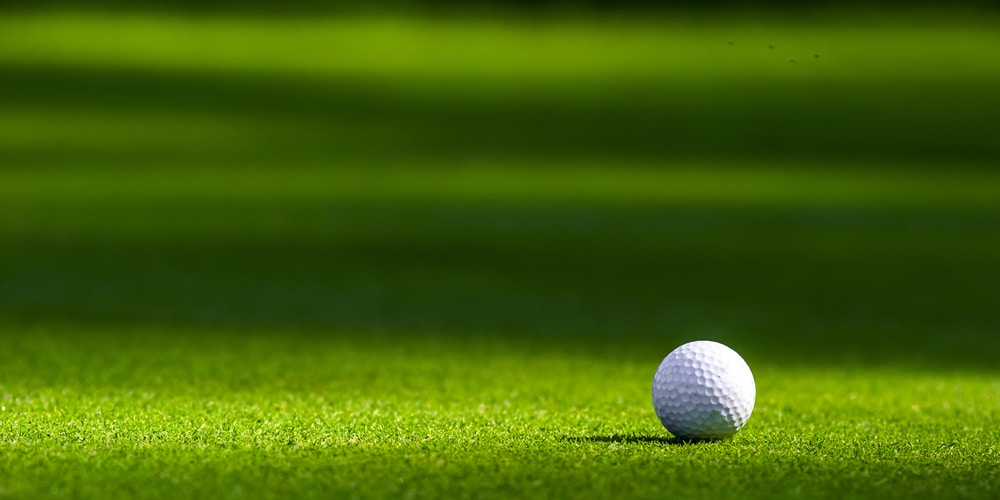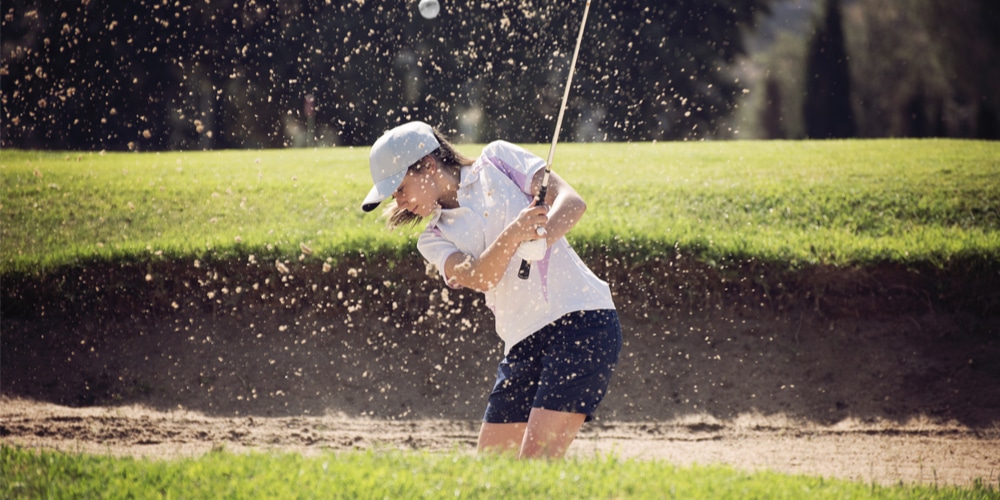If you’re looking to create a lush, green lawn that’s as smooth as a golfing green, you may like to consider choosing Bermuda grass. Having a lawn that’s the envy of your neighborhood and looks as good as a golf course is many homeowner’s dream.
Golf clubs commonly use a variety of grasses, depending on the climate and soil PH. One of the most common types of grass grown on golf courses across America is Bermuda grass. Bermuda grass is also an excellent choice for a private lawn in many states.
Golf courses employ professionals to maintain their turf and keep it smooth and in good condition. It is possible to achieve the same quality of lawn in your residential property. Let’s look at what type of Bermuda grass grows on golf courses.
Is Bermuda Grass Used on Golf Courses?

Bermuda grass is a fast growing and robust variety of grass which is excellent for golf courses and sporting greens. It’s a very durable grass that can handle a lot of traffic and abuse from golfers.
Bermuda grass is a warm-season grass that turns green early in the spring and has a long growing season between March and September. It’s a very versatile grass that can cope with hot temperatures, survives during the cold nights, and is also drought resistant. Bermuda grass is very appealing and excellent for homeowners and golf courses alike.
Bermuda grass is best for warmer states as it will die back during the colder months. Some golf courses are overseeded using perennial ryegrass, which fills in the holes. The fairways and tees at Augusta National have Bermuda grass growing.
What type of Bermuda is grown on Golf Greens?
Commercial golfing green uses a “green quality” Bermuda grass such as Tifgreen or Tifdwarf. Green quality grasses are laid using new sod or by plugging rather than planting seeds. Many golfing greens use a hybrid sod that grows from a few different varieties of Bermuda grass. Bermuda Highway 419 is used on golfing fairways.
Bermuda is a good choice for golf greens and fairways as it’s fast growing and is usually mowed six days a week to create a uniform grass surface. Here’s the best mower for Bermuda grass. Golfing greens are also fertilized regularly, and insect and disease control may be carried out.
If you have a home putting green, you may like to try growing Burmuda varieties such as Riviera, Tifway 419, Yukon, or Princess 77. These are suitable quality varieties of Bermuda grass, which are often used on fairways but they aren’t generally used for commercial golfing greens. They aren’t used on the green as they don’t create a smooth putting surface. Sometimes the ball may bounce off the turf, which is why most commercial golfing greens use Hybrid Bermudas.
What type of climate does Bermuda best grow in?
Bermuda grass likes to grow in the full sun; it’s well-suited to the southern states and is very common in Texas, Florida, and Georgia. Bermuda grass can deal with the colder nights during fall and winter and is also very drought resistant. This makes it an excellent choice of grass for states where water conservation is important. Bermuda grass can also be grown in more northern states, as it’s very versatile and can tolerate the temperatures.
Playing golf on a Bermuda green
The type of grass used on a golfing green will affect how the game is played. Some people are used to playing golf on other types of grass, such as Bent Grass. The golf ball can roll in a very straight line on Bent grass. Bermuda grass is slightly different and can have an effect on how the golf ball rolls. Here are some tips for playing golf on a Bermuda grass course.
Break and direction
The grain of the Bermuda grass influences how well the ball rolls. On a Bermuda golf course, the ball tends to break towards the direction that the grass grain grows. Before you start playing, it’s a good idea to establish which direction the grasses grain is growing. You can do this by looking at the color of the grass. If it looks dull or a dark green, it’s most likely that the grain is toward you. On the other hand, if the grass seems light green and looks shiny, it’s growing away from you.
Speed
It would help if you also tried to understand how the grass affects the golf ball’s speed. If you’re putting into the grasses grain, the speed is likely to be slower. This will take a bit of practice to get used to the grass. If you’re putting in the same direction as the grain, the golf ball will move much more quickly.
To successfully play golf on Bermuda grass, you’ll need to read the golfing green. Take into account the grasses’ direction as well as any changes in elevation and slopes that may affect the speed and direction the ball will travel.
Often, with Bermuda grass, you’ll need to hit an uphill putt slightly harder than you would on other types of grass to get it into the hole. If you’re putting into the grain of Bermuda grass, you may have to smash the ball to get it in the hole. For downhill putting that’s with the grain, you may find that the golf ball travels a lot faster than you were expecting.
Conclusion: Golf Course Bermuda Grass
Grasses commonly used on golf course green have to be tough and able to repair and recover quickly. Bermuda grass is often used as it can withstand lots of traffic. The grass grown on golf courses differs slightly from region to region. A grass is chosen, which will stand up to the heat and cold. Different grass varieties are also used for the tee box, fairway, and golfing greens. Golf courses are generally planted using a variety of Bermuda.
Playing golf on a Bermuda golf course may feel slightly different from other grasses. If you’re not used to playing on Bermuda, it may take a while for you to get used to the speed and direction the ball goes in.


